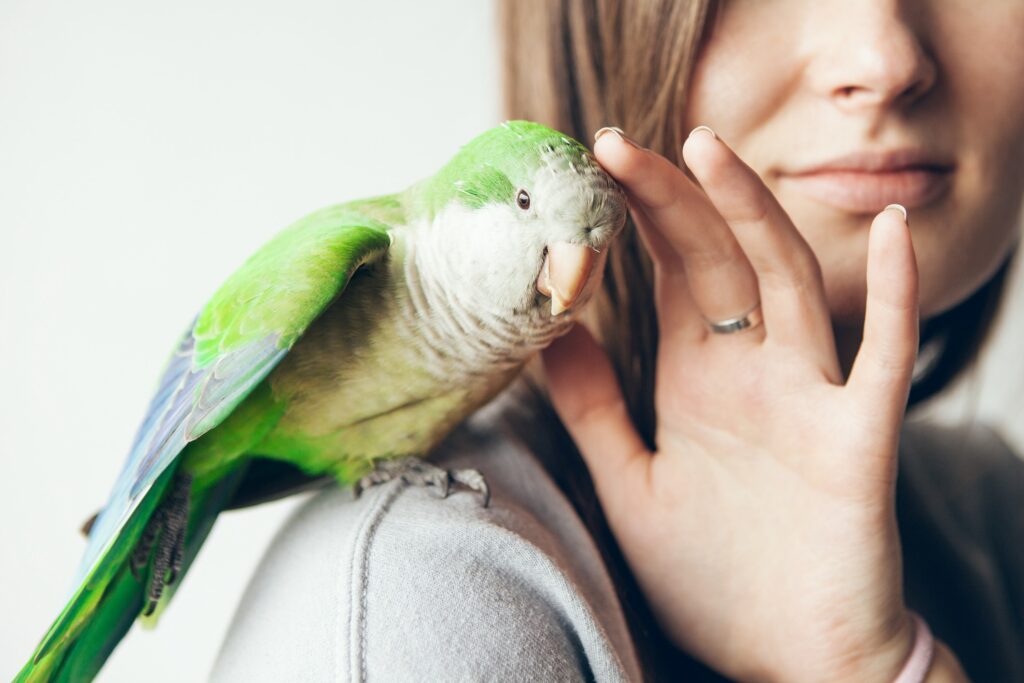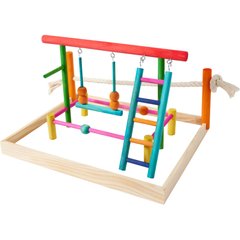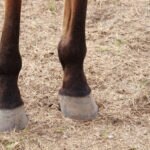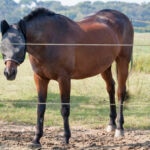How To Pet a Bird the Right Way

Photo by insonnia/iStock / Getty Images Plus via Getty Images
Bird petting, when done right, can be a great way to foster trust and make your feathered friend feel more relaxed—a win-win!
Petting a bird’s feathers can simulate the way birds preen one another—grooming a flockmate’s feathers is a sign of affection and helps strengthen bonds within the flock. You can also incorporate bird petting into basic bird training sessions as a nice way to thank your feathered friend for doing a good job.
Here’s what to know about how to pet birds.
Do Birds Like Being Pet?
You might be a parent to a pet bird, but does that mean your bird wants to be pet? The short answer is: it depends.
Some birds are eager to interact and will jump to the front of the cage or step up onto your hand, wanting to be petted. Others have to be in the mood, and they might even use their beak to push your hand away, which is a parrot’s way of saying, “Not now.” Some birds, however, can be strictly hands-off and dodge a hand coming at them like a prizefighter dodging a punch.
“A lot of the time, it comes down to how much trust you have with the bird,” says Lisa Bono, a certified parrot behavior consultant (CPBC) at Grey Parrot Consulting in South Carolina. She emphasizes the importance of understanding bird body language to clue you in as to whether the bird trusts you enough to allow petting.
Signs that your bird’s saying, “Yes, pet me!” include:
- Leaning toward your hand
- Raising a foot to be picked up
- Pacing along the perch
- Fluffing/shaking out their feathers (a sign of relaxation)
- Lowering their head or neck for you
- Making soft, contented sounds
However, if your bird shows any of the below body language, abort mission—your bird doesn’t want petting:
- Moving away from your hand
- Leaning back away from you
- Keeping their feathers tight against their body
- Swaying back and forth slowly
- Hissing or making distressed noises
- Biting, lunging, or showing other aggressive behavior
Some parrots are great at mimicking human speech, but even though a parrot might say “Pet me” or “I won’t bite,” don’t take them at their word—body language trumps anything a bird might say!
Bird Petting the Right Way
Petting your bird the right way means making it a positive experience for you and your feathered friend.
Being respectful is crucial. Restraining your bird or cornering them so you can touch their feathers destroys their trust—and worse, makes them fearful of hands.
Instead, follow these tips to ensure you approach petting the right way:
- Take it slow and build trust. According to Bono, there’s no set time frame as to when a bird will accept petting. “If you have a new bird, you’re not going to immediately try to get the bird out of the cage and pet it,” she says. Give the bird time to adjust to their new environment and wait until they show signs that they’re relaxed in your presence.
- Pay attention to body language. Look for signs that the bird is receptive to being pet, such as leaning toward you, lowering their head, or tilting their cheek at you.
- Stick to the head, cheek, and neck areas. These preferred areas are where birds typically preen one another.
- Go easy. Use your fingers to gently touch the bird’s feathers, and use short strokes as opposed to long ones.
How To Pet a Parakeet, Cockatiel, or Lovebird
Small birds like parakeets, cockatiels, and lovebirds can be flighty and might quickly fly off your hand if they sense even the slightest movement. Here are some tips for how to pet a small bird the right way.
- A good way to get a bird to stay on your hand is to hold a favorite treat, such as a bit of spray millet.
- Once your bird is used to being on your hand, watch for relaxed body language (e.g., the bird fluffs out their feathers, starts to groom, or grinds their beak).
- Don’t cup your entire hand around your parakeet, cockatiel, or lovebird, because your hand can look especially big and intimidating to these smaller birds. Instead, use your pointer finger to slowly pet your bird’s head or cheek feathers.
- To see whether they’re receptive to petting, you can also try using a cue word or phrase, such as “Want a pet?” before you pet your bird.
How To Pet a Conure, an African Grey, or a Macaw
For larger parrots, try these steps:
- Bigger birds, such as conures, African greys, and macaws, are more manageable and easier to pet while they’re on a tabletop perch or play gym that’s outside the cage.
- Once they’re outside their cage and on a play gym, pay close attention to the bird’s body language to make sure they’re receptive to being pet. A bird who is dodging your hand or leaning away from you probably doesn’t want to be pet.
- Unlike a smaller bird, which might fly off to avoid being petted, a larger parrot is more likely to stay put and resort to biting to get their point across.
- If your bird appears relaxed and receptive, use a finger or two (not your entire hand!) to gently brush their feathers. Focus on the top of their head.
How To Pet a Bird With Pin Feathers
When new feathers start to grow in, they look and feel similar to pins and are referred to as pin feathers. These feathers are covered in a keratin sheath.
When birds groom, they use their beaks to scrape the keratin off a new feather to free it from the sheath. But birds can’t self-groom the pin feathers on their head, face, or neck. This is where a bird buddy (or you!) can help.
Pin feathers can be quite sensitive, though, so be gentle and never pull them out! Your bird will let you know if they don’t want you to fiddle with a sensitive pin feather, so be respectful and stop if that’s the case.
- Start by petting your bird. Remember, restrict petting to only the feathers on your bird’s head, face, and neck.
- Look for pin feathers as you pet—they resemble pins and often feel pointed or sharp to the touch.
- Use your fingernails to gently scrape off the keratin sheath encapsulating the pin feather.
- Never pull out or tug on a pin feather —they’re sensitive and can cause pain.
- Stop right away if your bird shows any signs of discomfort or resistance when you touch a pin feather.
When Not to Pet a Bird
Pet birds can be territorial in and around their cage, especially during certain times of the year if they become hormonal.
Think of it as trying to enter a moody teenager’s bedroom unannounced; your intrusion won’t be welcomed! Reaching into your parrot’s cage to try to pet them could cause the bird to lunge at you—or worse, bite you.
Instead, let your bird come out of the cage. Prompt them to step onto your hand or move them to a neutral location, like a tabletop perch or play gym, so you can pet them.
Bono also recommends having a non-slip, bolt-on short perch on the inside of the cage door—this way, when the cage door swings open, the bird is outside the cage. This lets you avoid reaching into their space.
Recommended Products
Where NOT to Pet a Bird
There are definite areas where you shouldn’t pet a bird, including:
- Down their backside
- Under their wings
- Along their tail feathers
“Those are spots where a mate would preen or touch to try to hop on to mate,” Bono says. The best way to avoid giving your bird the wrong impression is to pet only their head feathers, facial/cheek feathers, and upper neck feathers.
Bird Petting FAQs
Is it OK to cuddle a bird?
You should never truly cuddle a bird, as in hug them or wrap them up in your arms—that can make them hormonal. However, a snuggle, where you allow your bird to lean against you, can be a shared tender moment.
What pet bird likes to be held?
The short answer is a bird who trusts you. Birds who have experienced mostly positive interactions with people are more likely to want to be held.
Do pet birds feel affection?
“Absolutely!” says Bono. “They are very sentient beings.”
In the wild, birds form strong bonds with their flockmates and show affection toward one another. In the home, you should offer consistent positive interactions, which can include petting as well as talking or singing to your bird, offering treats from your hand, or letting your bird snuggle against you.






